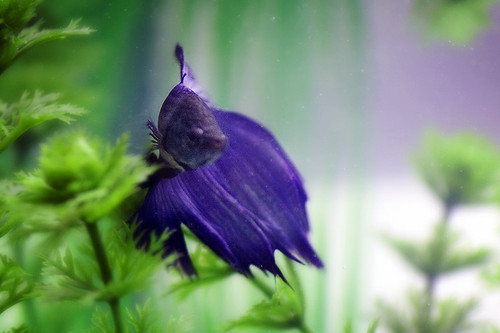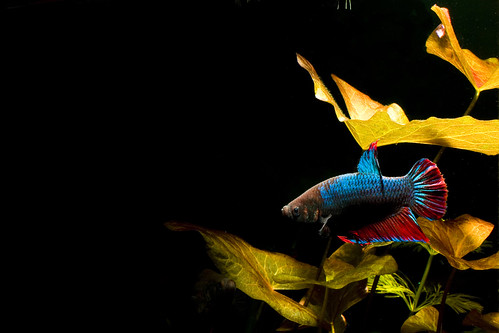SJ wrote,
On impulse (and without my prior knowledge) my daughter purchased a male betta from a major pet store. He lived in a tiny bowl for awhile until I kind of took over and now he lives in a ten gallon tank with a couple of fake plants that he likes to hang out in. I have never had fish and we know virtually nothing about them. I did a little research online to be sure he was at least getting the proper care. We've had him for about 5 months now. She quickly lost interest in him and now he's kind of mine. I would like to find a good home for him with someone who appreciates him and can care for him better than I. I keep his tank clean and he gets feed twice a day. I think he's healthy, but he doesn't seem to have grown any. His tank his not heated and we keep the temp down in the house, so I'm sure his water temp is not ideal for him. I would greatly appreciate any resources you might have for finding fish homes. I am hesitant to give him away for free because I don't want him to go to someone who doesn't care about him and will use him for fighting or as a throw away pet, but if you know of someone who really cares for these fish and trust them, they can have everything. I just want to find a good home for him.
A:Thanks for writing in. I applaud you for looking for a new home for your Betta when you are no longer able to care for him. Too often people choose to ignore their fish until it succumbs or decide to euthanize a perfectly healthy fish without first attempting to find it a new home. There are lots of options available to you. First, you can always bring your fish to a local animal shelter. Most won’t turn any animal away and you will be surprised to find a variety of small pets there including fish, hamsters, mice, birds and reptiles. You can also call your local fish store and see if they will take him back. They probably won’t pay you for him but may take him back if he’s in good shape. Call first though because some may have policies in places baring them from taking your fish. Another option is to call or email your local fish club. You didn’t say where you live but there are fish clubs in nearly all major cities full of enthusiastic hobbyists who would be happy to help. Most clubs readily accept donations and will add your fish to their monthly auction. If they can’t do that they almost certainly could put you in touch with a club member who could adopt your fish from you. Start by going online and Googling your city and “freshwater fish club” or “tropical fish society” or some version of those terms. Another option is to sell your fish at an online fish auction like AquaBid.com. This site is very popular among serious fish keepers but you will need to register and learn how to properly ship a fish if yours is purchased. Yet another option is to place an ad online at a site like Craigslist.org, an online fish club site like Aquamaniacs.net or your local town message board. I was able to find a home for many of my fish before I moved across the country by posting on my neighborhood’s online web forum. My neighbor, who had a large tank already, contacted me through the forum. One final option that you may find appealing is to donate your fish to your local elementary or middle school. Very often teachers will take them in and use them as a classroom pet and will often solicit help from their students in caring for them.
I hope you find one of these ideas useful and find a new home for your little Betta soon. Thanks so much for writing in.












